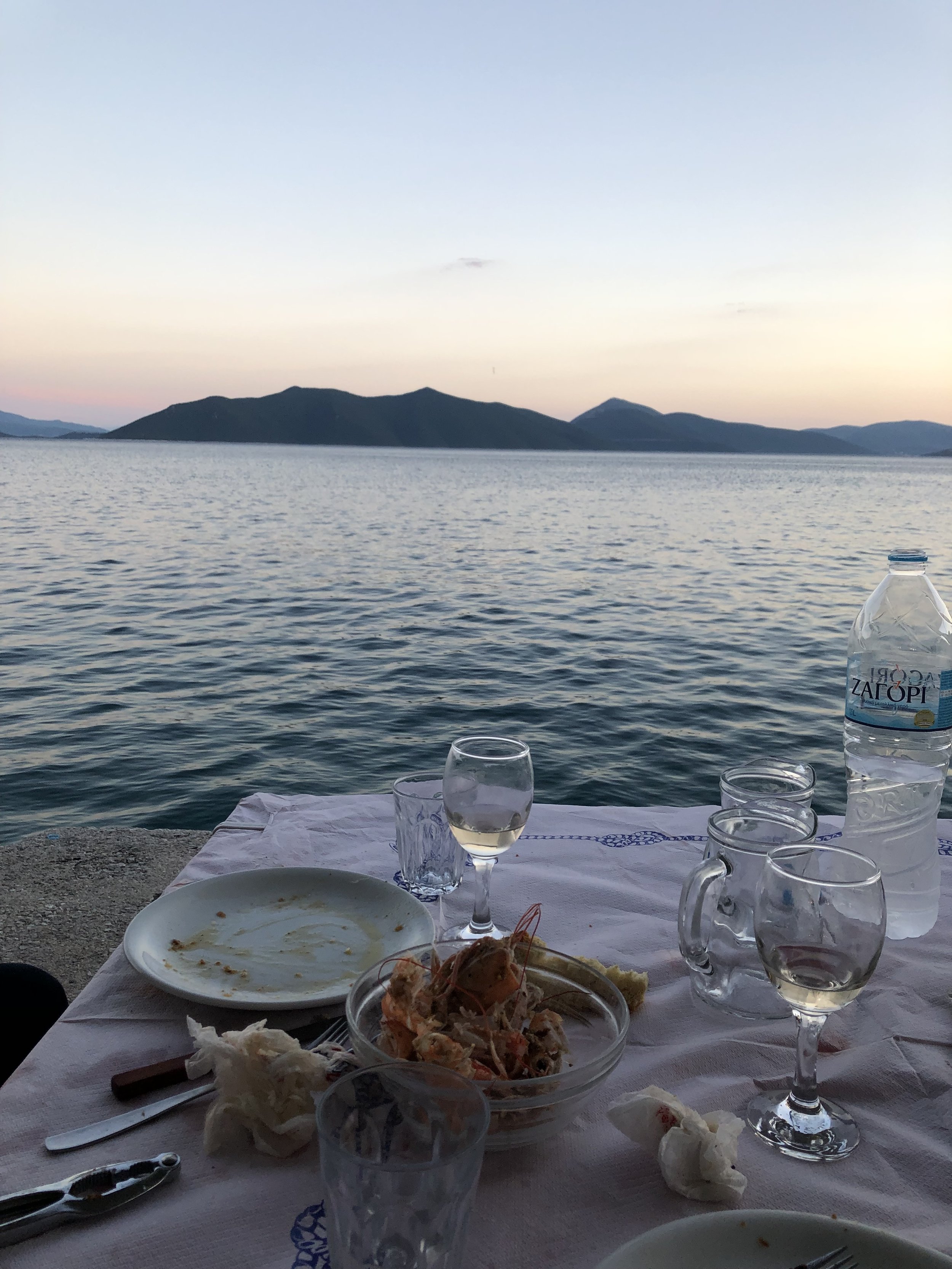Current Obsession No. 6
I write this week to obsess on salads. Greek salad, specifically, the kind they call the horiatiki, or village salad. As a vehicle for variation, it is unparalleled. Simple, with a few essential ingredients – tomato, cucumber, green pepper, onion, feta, olive oil – and some optional garnishes, its rock solid structure allows it to serve equally well as a meal or as a side dish. I’m reflecting on the horiatiki right now from a balcony overlooking the hills around Vytina, Greece, in the small town where my wife’s grandfather was born, famous for its pine forests, to which we have pilgrimaged annually since the early nineties.
Last night we had a beautiful meal at a village taverna – some grilled pork with fried potatoes, a greens pie with delicious filo, and of course horiatiki. This one had sharp onions, sweet red tomatoes, and no olives but plenty of local oregano, a spice that’s not always included. On the side were grilled slices of bread drizzled with oil and peppered with oregano. But the killer ingredient was the feta, which was extra tangy, smooth, and very salty, quite particular. We asked where it was from, and the taverna owner said his mother makes it. We asked if we could buy some, to which he just laughed and thanked us. Then at the end of the meal a little bag of feta was suddenly there in our midst, and made its way onto our afternoon salad the next day.
A week earlier, I’d voyaged to Vytina with my father-in-law and his brother. They needed to vote in regional elections and I wanted my first horiatiki of the trip, so I took the two-hour ride. We went to a different taverna not 200 feet from the other. The horiatiki was totally different, and also lovely. Soft, white onions that had been soaked in water longer to remove their edge, extra sweet tomatoes, and – much to everyone’s surprise – a yellow cheese called graviera instead of feta. In my world, this is nothing short of heresy, but the waiter explained that the cook – his mom – refused on principle to cook with feta. I was skeptical but it was delicious, adding a slightly different primary overtone to the top end of the dish. This is what I love about horiatiki – two restaurants a few blocks apart, two totally different concepts of the salad. Go from one town to another and they’re even more different, reflecting local and seasonal flavors with uncommon immediacy. There are nearly infinite horiatiki in Greece. But it is a recipe to be respected, not modernized or hipsterfied. The variations are more to do with the taste of the ingredients than introduction of weird or unexpected ones. No reason to mess with it – just a straight up horiatiki is a thing of splendor.
In between these recent sessions, I ate several horiatiki in Lefokastro, a seaside village in the northeast, where I was pleasantly surprised to find pickled seaweed in my salad. It turns out to be a standard element there, adding another set of perspectives and jibing perfectly with the grilled fish and squid to follow. Gave me a chance to dig in with a chunk of soft bread – the bread here is soft to allow for just this activity – and make papara. That’s the word they have for when you dip bread in the drippings or the excess oil at the bottom of the bowl. We’re really a lesser society in the U.S., I think, for not having the concept of papara.















